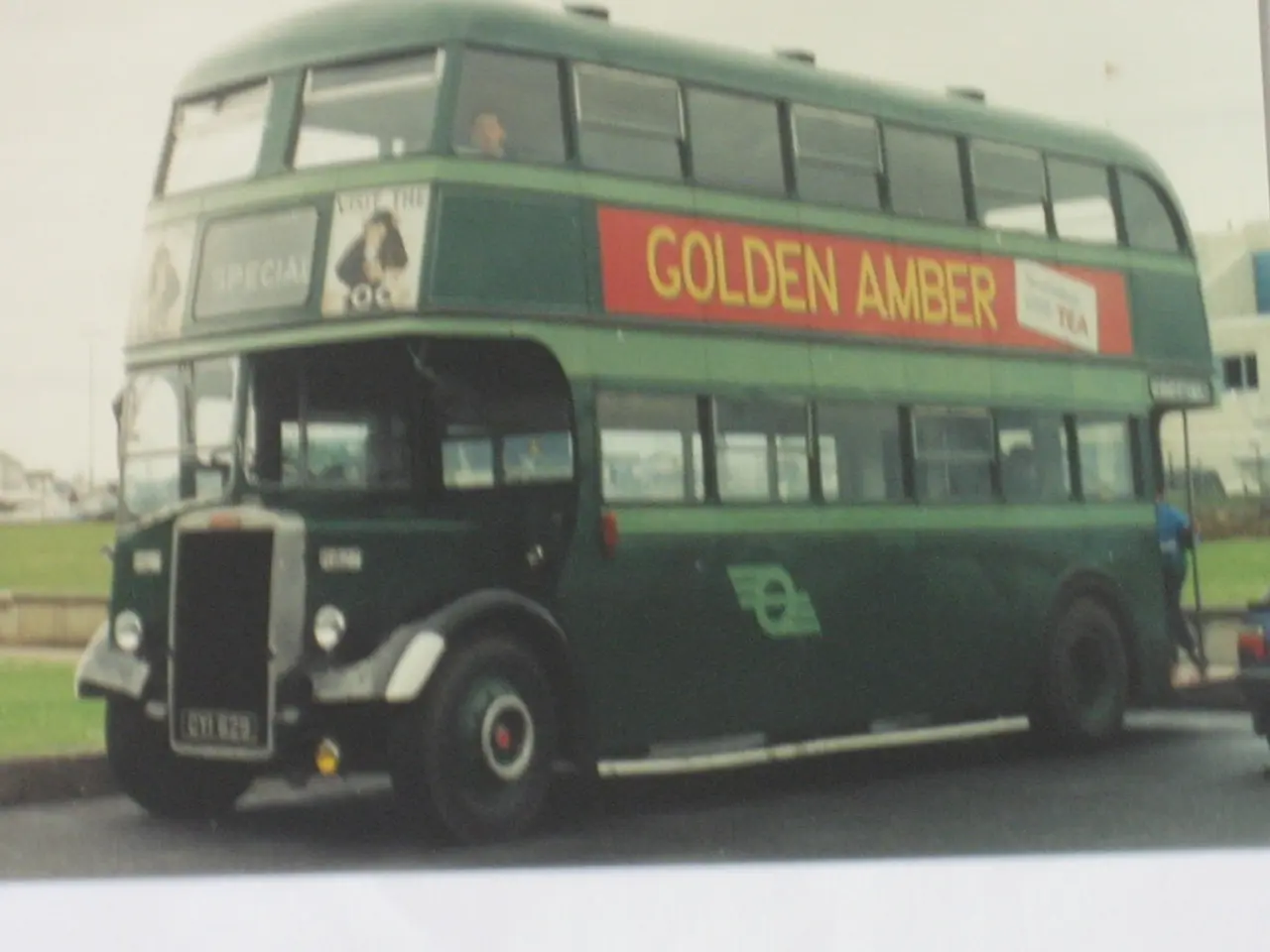Urban Design Visualization: Significance in Shaping City Layouts and Construction
Infrastructure sculpting significantly influences the formation of modern cities, shaping everything from traffic to public services. However, the process of planning and executing large-scale infrastructure projects is complex, requiring collaboration among numerous players, adherence to legal requirements, and a focus on long-term environmental goals. That's where 3D infrastructure sculpting comes in handy.
Infrastructure sculpting transforms complex blueprints and models into highly detailed, believable visuals. These visuals help urban planners, architects, and developers communicate their ideas more effectively, leading to improved project communication and faster approvals.
Our rendering studio has a wealth of experience in visualizing complex infrastructures. Without further ado, let's delve into the particulars of infrastructure sculpting!
What is 3D Infrastructure Sculpting?
Infrastructure sculpting involves creating lifelike CG representations of large-scale urban projects in 3D. These visualizations go beyond schematics, plans, and blueprints, making them easily understandable for both technical teams and novices.
With the help of infrastructure sculpting, professionals can effectively visualize:
- roadways and freeways;
- bridges and tunnels;
- railways and metro stations;
- water and sewage systems;
- public spaces and city layouts;
and more.
By utilizing infrastructure sculpting, stakeholders can assess the viability of designs, discover potential issues, and refine details to achieve optimal results.
Why is 3D Sculpting Essential for Infrastructure Projects
3D sculpting has proven to be a game-changer in infrastructure development. It's an invaluable tool for architects, urban planners, developers, and decision-makers alike. So, what specific benefits does sculpting bring to the table?
Enhanced Communication with Stakeholders
Infrastructure projects involve a multitude of parties, including government officials, investors, architects, and the general public. 3D sculptings provide clear, appealing visuals that simplify technical concepts for all stakeholders. Instead of relying on blueprints, diagrams, and imagination, decision-makers can explore intricate digital sculptures.
Precise Planning and Conflict Detection
Infrastructure projects consist of multiple systems, materials, and spatial constraints. Without proper visualization, potential issues like overlapping structures, inefficient layouts, or construction challenges can cause needless delays and redesigns.
With 3D sculpting, urban planners and engineers can detect spatial conflicts early, ensuring that urban structures harmoniously coexist without interference. For example, while designing a metro station, 3D infrastructure sculpting can reveal whether underground utilities clash with planned tunnels.
Environmental and Social Impact Assessment
Sustainability stands at the core of modern urban development. And sculpting plays a crucial role in assessing impacts on the environment and the community before construction even starts. It enables decision-makers to stop ill-considered projects early, focusing on more sustainable alternatives.
Our team at ArchiCGI offers an example of how 3D sculpting of public spaces supports sustainability. We were approached by an environmental activist, who wanted to showcase the potential environmental impact of a planned redevelopment of a golf and tennis facility in California. If the development had gone ahead, it would have significantly reduced green spaces, impacting wildlife and limiting public access to recreational areas. Thanks to the infrastructure sculptings we created, local authorities and the community were able to view the risks and reconsider the project's approval.
Main Advantages of Using 3D Sculpting for Infrastructure
So, what are the key advantages of using 3D sculpting for architects and urban developers?
Faster Project Approvals
Securing approval for large-scale infrastructure projects can be challenging due to legal constraints, environmental concerns, and public scrutiny. Lifelike 3D sculptings help expedite approvals by showcasing projects in an engaging, easy-to-understand manner.
Public officials can assess regulatory compliance, safety standards, and urban integration before granting permits. Investors and developers gain confidence when they see the project's feasibility. And the public can better understand the impact of a project on their area, minimizing resistance to new developments.
Cost and Time Efficiency
Miscalculations in infrastructure planning can result in costly corrections and construction delays. 3D visualization enables stakeholders to detect potential issues before breaking ground, reducing unnecessary expenses. From error prevention to clear communication, infrastructure sculpting facilitates a smoother, more efficient process.
Better Collaboration and Workflow Integration
Infrastructure projects require the input of various teams, including architects, engineers, urban planners, environmental specialists, and marketing professionals. 3D sculpting provides a common reference for teams, ensuring seamless collaboration and preventing misunderstandings.
Types of 3D Sculpting for Infrastructure
Depending on their purpose, audience, and complexity, infrastructure projects require different types of 3D sculpting. Let's look at the primary ones.
Non-photorealistic Technical Visualization
This type of sculpting concentrates on conveying technical aspects rather than aesthetics. It is especially useful for engineering teams and urban planners, helping them analyze structural elements, subterranean utilities, and zoning layouts.
Cutaway sculpting is a great example of this approach. Several types of cutaway sculpting exist, but they all have one common feature: part of the outer walls or other surfaces is removed to display the internal workings of a project. This allows one to gain a better understanding of the internal structures and see how the different systems interact.
Photorealistic Sculpting
Photorealistic infrastructure sculpting produces highly detailed visualizations for stakeholder presentations and marketing purposes. The most effective techniques include:
Site plan sculpting. It provides a top-down view of an entire infrastructure project.
Bird's-eye view. This type of sculpting presents the project from an elevated perspective, demonstrating its integration into the surroundings.
Photo-matching. It intermingles 3D graphics with actual site photos, enabling CG artists to create highly realistic visualizations.
These CGI techniques help decision-makers visualize the final project more effectively and accelerate approvals.
Animations
For projects involving movement, like transportation infrastructure, 3D animations are an essential tool. They show traffic flow, pedestrian movement, and environmental changes over time, allowing for a dynamic, informative way to evaluate infrastructure design.
Selecting the Right 3D Visualization Partner
Choosing the right 3D visualization partner is crucial for obtaining high-quality sculptings that effectively support infrastructure planning and development. Consider these key factors:
Expertise in Infrastructure Projects
Not all 3D visualization studios specialize in infrastructure sculpting. So, when selecting a partner, look for a company with expertise in urban development projects, such as roads, bridges, public spaces, transportation hubs, and utilities. A team that knows the details of large-scale infrastructure designs can create sculptings that are both technically precise and visually striking.
Software and Technology Proficiency
Larger studios often boast cutting-edge hardware like rendering farms. Absent such equipment, large projects become challenging or even impossible to complete. Artists should also be proficient with different software types, from CAD to Unreal Engine. Make sure the company you choose has all the required equipment and software.
Efficient Workflow
An organized, transparent workflow is essential for delivering projects on time while meeting client expectations. A reliable 3D visualization company should offer clear project timelines, trackable milestones, transparent means of communication, straightforward revision policies, and dedicated project managers.
Flexible Team Scalability
Large infrastructure projects require scalable 3D visualization teams that can handle multiple tasks concurrently. For instance, our studio at ArchiCGI boasts a team of over 600 3D artists, allowing us to work on high-volume projects without sacrificing quality.
Proven Track Record and Portfolio
A studio's portfolio offers insights into its skills and abilities. Look for a visualization partner that presents a diverse range of infrastructure projects across various scales and industries, while consistently creating realistic, high-quality sculptings tailored to your projects' specific needs.
Positive Client Reviews
Client testimonials provide valuable insights into a studio's professionalism, reliability, and rendering quality. Evaluate ratings and reviews on different platforms (not just the studio's website). Pay attention to feedback on both technical skills (delivered results) and soft skills (punctuality, communication, etc.).
Infrastructure sculpting is an essential tool for urban development initiatives. The benefits of 3D sculpting—improved communication, enhanced design quality, and informed decision-making—make it a valuable asset to the architectural, planning, and development communities. If you're planning a large-scale infrastructure project, consider incorporating 3D sculpting into the design process to optimize results and accelerate approvals.
Want to learn how ArchiCGI can elevate your project? Book a free demo today!
Discover the Power of 3D Sculpting!Schedule a free demo nowBook a DemoLooking for a reliable 3D visualization partner dedicated to helping you bring your infrastructure vision to life? Partner with us at ArchiCGI and watch your projects come to life with stunning, realistic 3D visualizations that enhance collaboration, communication, and productivity. Contact us today!
Stacey MurContent Writer, Copywriter
Stacey is a content writer and CG artist, pursuing her passion for storytelling and art. In her free time, she enjoys musicals, Star Wars, and discussing art. A proud Corgi parent.
- Infrastructure sculpting transforms complex blueprints and models into realistic, believable visuals, enhancing communication among urban planners, architects, and developers.
- Utilizing 3D infrastructure sculpting, professionals can visualize a variety of infrastructures, including roadways, bridges, water systems, and public spaces, helping to assess project viability and detect potential issues.
- Effective visualization is crucial for infrastructure projects, as it streamlines collaboration among various teams, expedites approvals, and provides a means to detect spatial conflicts that might lead to delays and redesigns.
- Environmental impact assessments can be effectively conducted with infrastructure sculpting, allowing decision-makers to evaluate sustainability considerations before construction begins.
- By employing 3D sculpting, stakeholders can access photorealistic site plan sculptings, bird's-eye views, and photo-matching techniques for more realistic presentations and marketing purposes.
- 3D animations serve as essential tools for projects involving movement, demonstrating traffic flow, pedestrian movement, and environmental changes over time to evaluate infrastructure design.
- When searching for a 3D visualization partner, it is essential to consider the company's expertise in infrastructure projects, software and technology proficiency, efficient workflow, team scalability, proven track record, and positive client reviews.




